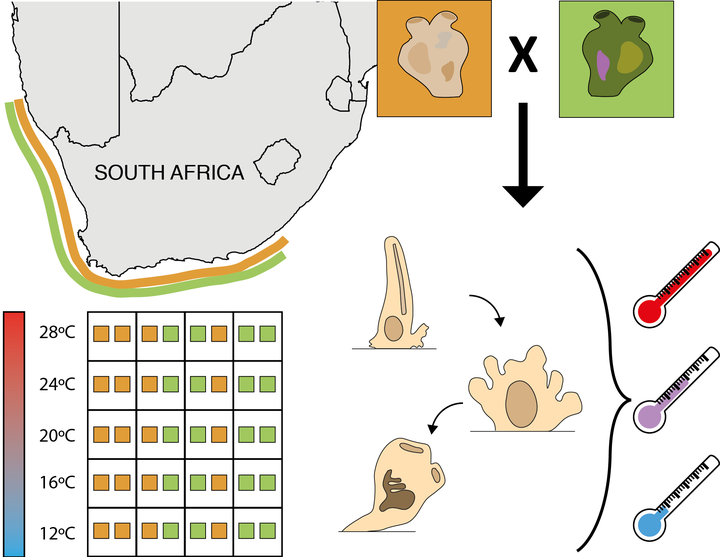Contemporary climate change hinders hybrid performance of ecologically dominant marine invertebrates

Abstract
Human activities alter patterns of biodiversity, particularly through species extinctions and range shifts. Two of these activities are human mediated transfer of species and contemporary climate change, and both allow previously isolated genotypes to come into contact and hybridize, potentially altering speciation rates. Hybrids have been shown to survive environmental conditions not tolerated by either parent, suggesting that, under some circumstances, hybrids may be able to expand their ranges and perform well under rapidly changing conditions. However, studies assessing how hybridization influences contemporary range shifts are scarce. We performed crosses on Pyura herdmani and Pyura stolonifera (Chordata, Tunicata), two closely related marine invertebrate species that are ecologically dominant and can hybridize. These sister species live in sympatry along the coasts of southern Africa, but one has a disjunct distribution that includes northern hemisphere sites. We experimentally assessed the performance of hybrid and parental crosses using different temperature regimes, including temperatures predicted under future climate change scenarios. We found that hybrids showed lower performance than parental crosses at the experimental temperatures, suggesting that hybrids are unlikely to expand their ranges to new environments. In turn, we found that the more widespread species performed better at a wide array of temperatures, indicating that this parental species may cope better with future conditions. This study illustrates how offspring fitness may provide key insights to predict range expansions and how contemporary climate change may mediate both the ability of hybrids to ex- pand their ranges and the occurrence of speciation as a result of hybridization.